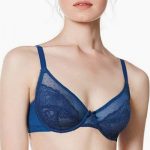Spectroscopy refers to the procedure that analyzes the absorption and giving of light by an object. The study of various chemicals spreading and dispersing light into numerous wavelengths and unravelling into many colors is also spectroscopy. Entire objects emit or absorb light; however, analysts gather together statistics about a chemical’s properties by merely evaluating the kind of light emitted or absorbed. Additionally, spectroscopy can also ration the mass and temperature of objects.
When it comes to UV-Vis Spectroscopy, it examines chemicals or objects using a near-infrared percentage of the electromagnetic spectrum, which basically refers to light having wavelengths extending from 800 to 2500 NMS. By determining the outline of near-infrared light, which is reflected by a sample, NIR spectroscopy provides data concerning its chemical configuration. The technology offers light bounces off the sample by using a light source. The wavelengths are then perceived and recorded to deliver an appropriate examination of the sample.
Advantages of infrared spectroscopy
This spectroscopy offers various benefits compared to other spectroscopes’. These advantages include;
Affordability
You find that using near-infrared spectroscopy; analysts conduct wide-ranging analysis at a reasonable price compared to other MRI methods, which are relatively expensive. More so, near-infrared light has the ability to pierce deeper than infrared light; therefore, it scans chemicals and objects at a larger scale are probable with a reflectance of near-infrared.
Accuracy
The near-infrared spectroscopy is beneficial in that it has an excellent signal-to-noise ratio. Background analysis which usually affects the scan’s accuracy is lesser than those of trial test results. Lesser noise levels help scientists and doctors perform these researches to get accurate and precise results from the NIR reflectance.
Safety
This spectroscopy is actually the best substitute to the old way magnetic resonance imaging or the MRI X-rays performed in the hospitals. In addition, patients of young age and who have had cardiac operations recently cannot be examined by an MRI due to many possible complications; hence they can only be safely examined using a near-infrared spectrophotometer. Hence it is advisable to go for the NIR compared to other analyzing processes.
Time-saving
These methods offer techniques that may be used in an extensive biological sample with no need for extractions, mostly primes, to ruin the antioxidant’s mechanisms. It saves time that could be lost during the preparation of samples and during the analysis process. Basically, this method offers quantitative and qualitative end results within a short time. In conclusion, scientists highly recommend using UV-Vis Spectroscopy for analysis as it is accurate, affordable, safe to use, and time-saving.
Conclusion
A complete portfolio of supplies and accessories are flexible and easier to set up. So you can use UV-Vis spectroscopy of liquid or solid samples, exact temperature and reflectance measurements to analyse your measurements.


